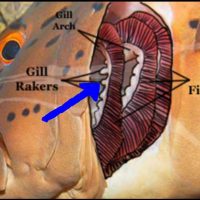I tried it for the first time the other day. A bass was hooked in the back of the mouth where the esophagus begins. I had my doubt because I didn’t think the barb would come past the skin because there was tension.
I realized there was no way to pivot the chatterbait 180 to pull it out and even if o could, it probably would have done more damage by pulling and ripping.
I was nervous putting my old rusty pliers past the gills. I knew and small knick would probably cause it to bleed to death.
I carefully navigated them past the first set of gills and made sure I would pinch them when I squeezed down onto the hook. I grasped the hook and much to my amazement, it didn’t take much effort to unhook the bass. I carefully navigated the pliers back out and the bait. She was good to go!
I am mostly bringing this up to suggest you always have a good pair of pliers. I’d find one with the shortest mouth/gap to help prevent crimping down on the gills.
